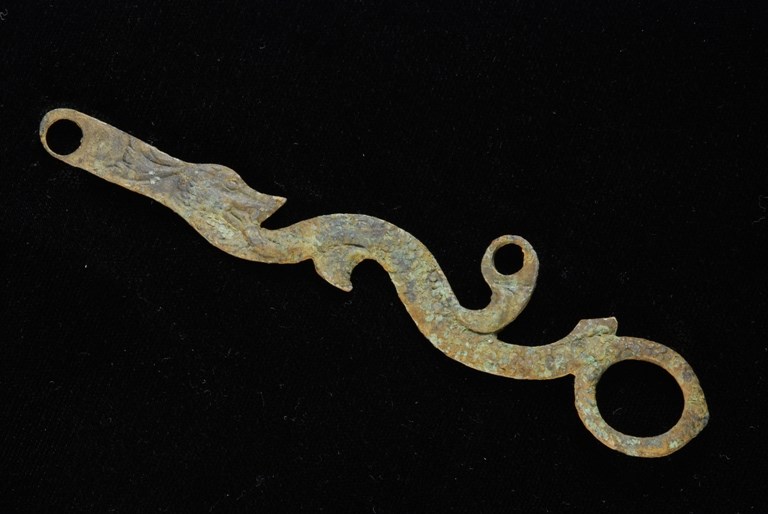
NPS PHOTO Between 1825 and 1860, "Northwest Guns," a common, commercially produced, smooth bore, lightweight musket with a distinctive dragon shaped side plate, were traded and sold from Fort Vancouver for beaver pelts that in turn were sold for the production of high quality hats. These trade muskets were used not only to hunt game, but also served as a weapon of offense and defense, as well as a powerful status symbol. Ironically, while trade muskets immediately provided indigenous peoples with very efficient tool for hunting and defense, the arrival of firearms technology resulted in a relationship of dependence on Europeans or Americans for ammunition and new parts. Precisely how many guns were shipped to Fort Vancouver is unknown, as many of the original invenotry records have been lost. However, by example, in 1844, as the Northwest fur trade was waning, one trading vessel, the Barque Brothers, unloaded 187 "Indian Guns" at Fort Vancouver. Some of this shipment was re-distributed to the two dozen smaller posts throughout the Oregon Country, The remaining muskets were kept at Fort Vancouver's Indian Trade Shop. The early 1840s brought a large migration of American settlers into the Pacific Northwest via the Oregon Trail. In 1846, the Treaty of Oregon was signed between the United States and Great Britain, setting the national boundary at the 49th parallel, where it remains today. Although Fort Vancouver and many of its subsidiary posts found themselves conducting business within the borders of the United States, the Hudson's Bay Company diversified into other profit-making ventures. The Hudson's Bay Company closed Fort Vancouver in 1860 and moved operations north into Canada. Trade muskets, the design of which dates back to the 1750s, continued to be sold in Canada by the Hudson's Bay Company in an almost unaltered form until about 1910. Its lightweight, simple design, and standardized bore size served both Native and Euro-American trappers for over 150 years, and saw use during three centures of rapid change across North America. - Daniel Ray, Volunteer-in-Parks |
Last updated: February 28, 2015
